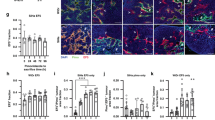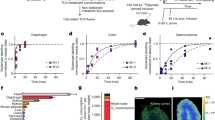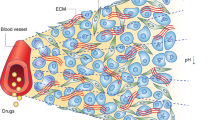Abstract
Experiments on s.c. rat tumours (DS sarcoma) were performed to determine whether chronic or acute changes in tumour perfusion necessarily lead to changes in tissue oxygenation and bioenergetic status since, as a rule, blood flow is thought to be the ultimate determinant of the tumour bioenergetic status. Based on this study, there is clear experimental evidence that growth-related or acute (following i.v. administration of tumour necrosis factor alpha) decreases in tumour blood flow are accompanied by parallel alterations in tissue oxygenation. In contrast, tumour energy status remains stable as long as flow values do not fall below 0.4-0.5 ml g-1 min-1, and provided that glucose as the main substrate can be recruited from the enlarged interstitial compartment. Perfusion rate seems to play a paramount role in determining energy status only in low-flow tumours or low-flow tissue areas.
This is a preview of subscription content, access via your institution
Access options
Subscribe to this journal
Receive 24 print issues and online access
$259.00 per year
only $10.79 per issue
Buy this article
- Purchase on Springer Link
- Instant access to full article PDF
Prices may be subject to local taxes which are calculated during checkout
Similar content being viewed by others
Author information
Authors and Affiliations
Rights and permissions
About this article
Cite this article
Vaupel, P., Kelleher, D. & Engel, T. Stable bioenergetic status despite substantial changes in blood flow and tissue oxygenation in a rat tumour. Br J Cancer 69, 46–49 (1994). https://doi.org/10.1038/bjc.1994.7
Issue Date:
DOI: https://doi.org/10.1038/bjc.1994.7



